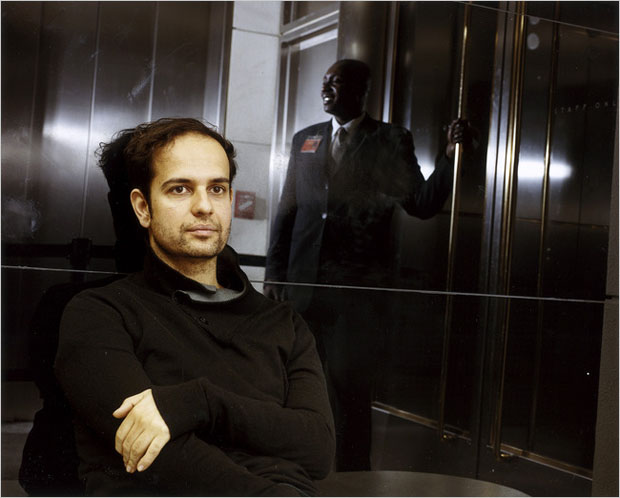
Tino Sehgal is coming to the Tate
The phrase "you really had to be there" will take on new meaning at the most unpredictable show of 2012
While all eyes seem to be on Damien Hirst's upcoming retrospective, a very different kind of artist comes to the Turbine Hall this summer. Chosen for this year’s Tate’s Turbine Hall commission, Tino Sehgal creates work that is experienced as interactions between people. Tino Sehgal 2012 will be part of the London 2012 Festival and makes up part of the finale of the Cultural Olympiad. Fittingly, at a time when visitors from around the world will be converging on London, Sehgal’s work will focus on live interpersonal encounters.
You will only ever see Sehgal’s work while being politely engaged with by the people who interpret it. For like the stories of a travelling bard before writing was invented, it leaves nothing but memories. There are no photographs, no recordings, no catalogues, no posters - nothing to buy in the shop afterwards. Even when it is bought and sold – and it has been acquired by such institutions as MoMA, the Tate and the Guggenheim – it generates no bill of sale, no contract, no receipt. It is art as pure human communication, and like a conversation, it changes with each retelling. “Even if people don’t fully understand where my work is coming from, at least there’s somebody who looks kind of sane standing in front of you and politely engaging with you," he says, "people react.”
Sehgal was born in London in 1976, to a German mother and an Indian father whose parents had fled from what is now Pakistan. Raised in a conventionally materialistic and ‘very uncultural’ household, he responded as many teenagers might, by questioning the value of material wealth and rejecting the importance of ‘things’. His interest in art and politics took him to universities in Berlin and Essen, where he studied economics and dance – two apparently unrelated subjects that turned out to have surprising associations. His pieces have been called choreographies, but they are grounded in his interest in political economics and alternative means of production/consumption. Sehgal makes art that is entirely sustainable, requiring no material apart from human energy and leaving nothing – not a single piece of paper – to be transported, stored or disposed of. There are no photographs or representations of his work in this story as he does not want to add more images to a world "consumed by visual pollution."
His search for a career that satisfied the practical need for an income but did not involve the creation of any physical object led Sehgal to dance, but he ‘wanted to do dance with the same seriousness as art was done… not with the entertainment factor [of] theatre and film.’ Thus his pieces exist during all the hours that the museum or gallery is open, whether there are viewers or not – just like a painting or sculpture.
Although he rejects the term ‘performance art’, preferring to call his pieces "constructed situations" it follows in the tradition of the ‘happenings’ of the 1960s and 70s, even if his refusal to allow them to be documented in any way reflects a twenty-first century ethos. His early work was mutely sculptural and commented on artistic themes: Kiss (2002), for example, comprises a couple engaged in a sequence of kisses from well-known works of art (think Klimt’s painting or Rodin’s bronze). His later works have become more interactive and complex, as in This is Progress (2006), in which visitors are engaged in conversation by groups of increasingly older performers, and This Situation (2007), in which interpreters begin a conversation with one another by stating a philosophical axiom, periodically asking viewers, ‘What do you think?’.
Sehgal’s work is built around contradictions. It is rigorously planned and rehearsed but changes from one viewing to the next and is largely improvised; it is completely ephemeral and yet expensive, because his interpreters are fairly paid; it is both humorous and profoundly serious; it has links to traditional art and thought but is – so far – unique. He creates art out of nothing, allowing it to return to nothing when complete, and he revels in the paradox: ‘The museum has developed … as a temple of objects. … I don’t think it’s that interesting, and it’s not sustainable. Inside this temple of objects, I refocus attention to human relations.’
"This capacity to draw in and yet reject the viewer is one of the aspects that makes Sehgal's oeuvre so unique," writes 2013 Venice Biennial curator Massimiliano Gioni in Defining Contemporary Art. Read more of what he has to say about Tino Sehgal and other artists here.